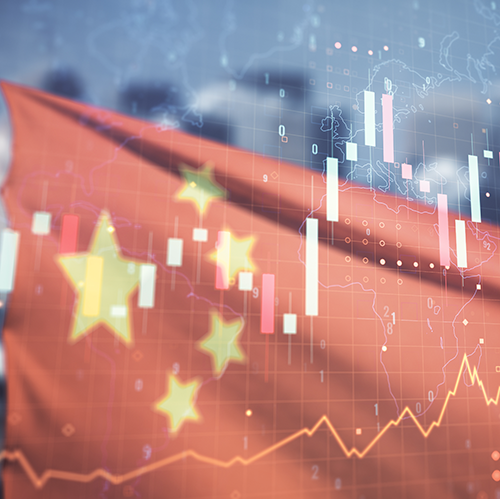The market is buzzing about the China stimulus package narrative and its impact on repositioning structured products underlying exposure.
Investors are repositioning Chinese and Hong Kong stock underlying exposure via structured products, thanks to the equity rally on the back of Beijing’s monetary stimulus measures – and the industry is weighing whether it would be a sustainable run.
The new policy has triggered investor interest and trading action in China and Hong Kong stock exposure for structured products over the past week, at least.
Most of the time this year wealth clients’ underlying exposure to the US underlying amounted to roughly 70%-75% of the trading volume, while Hong Kong underlying only made up approximately 20%, according to an equity sales head for Asia at an investment bank’s global markets division.
That business dynamics have “shifted significantly” following the stimulus package announced by the People's Bank of China last Wednesday, the senior executive told SRP.
“At least in the past week or so, the trading volumes [of the Hong Kong underlying] are four to five times [bigger],” he said, adding that large-cap stocks mainly drive the volume.
According to the banker, from an interest and trading volume perspective, the overall exposure and market’s views are “more balanced this time” and have drifted away from being completely bearish on the Hong Kong tech sector.
Investors cheered over the strong, upbeat trend of the China and Hong Kong stocks that haven’t been seen for years. On Monday (30 September), China’s benchmark CSI 300 index soared 8.5% to finish its best single day since September 2008 before heading to the week-long National Day Holiday. Hong Kong stocks have also rallied for the sixth consecutive day by Wednesday’s close (2 October), with the Hang Seng Index closing up 6.2% to 22,443, the highest level since January 2023.
The latest market rally followed China’s central bank announcement on 25 September of a flurry of stimulus measures to boost its economy and embattled property sector, including interest rate cuts, more cash supply to its banking system, and increased property incentives.
“I guess this is becoming general cognizance that things have just been beaten down so much at a certain point it must turn around,” a senior equity derivatives salesperson at another investment bank told SRP.
"Some institutional investors are increasing their Chinese exposure on the back of the news,” the salesperson said.
The second source remained slightly cautious about the current rally, however. In retail over-the-counter trading, one gauge that may help show a picture of the market dynamic is the ratio between accumulators and decumulators.
According to this banker, on the first day of the stimulate package policy, there were lots of bullish-focused accumulators but then by the second day already, a number of decumulators were coming out.
“In fact, there were more decumulators than accumulators, which suggests that many investors were now looking to offload their existing positions,” the source added.
On the listed structured product trading front, Hong Kong’s warrant investors have been taking profit from the rally on household stock names such as Alibaba, Ping an Insurance China (H Shares), as well as Chinese securities companies like CITIC Securities Company, a sales manager from a listed structured product issuer told SRP after Monday’s close.
“It seems investors are still very bullish on Hong Kong Exchanges and Clearing stock with record high turnover from the big rally and still inflow on the call warrants and callable bull/bear contracts (CBBCs) for the past two days (26-27 September),” the warrant sales said.
Meanwhile, in onshore China, investors are eyeing the next knock-out level among snowball products to capture the coupon following the stock rally.
A spokesperson at Galaxy Technologies, a Shanghai-based derivatives trading and risk management solutions provider, told SRP Monday that there is still some distance for CSI 500- and CSI 1000-linked autocallables to reach the major knock-out levels, which will be standing right above 6,000.
Outlook
China’s stock market is closed for trading until next Tuesday (8 October), while the rest of the markets are digesting what all of these moves mean for the market.
Chen Jun Yu, deputy chief investment officer, equities at Value Partners, a Hong Kong-based asset manager, wrote in a Monday note that China equity’s valuations remain attractive as the risk premium of MSCI China stands at around 6.5%.
‘We believe that the risk-reward ratio is still attractive. Policies could bolster confidence, and fundamentals are likely to rebound, in our opinion,’ Chen wrote.
On the other hand, there are still major challenges in China that need to be overcome such as high unemployment, noted one of the bankers.
“I'm not sure we've really come to the end of the property issues,” he said.
“If the economic data starts to improve and there's an ongoing series of supporting measures, then the interest will come back,” the other banker said. “There is a natural pot of money which gets invested into Hong Kong stocks and a lot of high-net-worth[-individuals] in North Asia [who] are naturally inclined to invest more in Hong Kong.”
Do you have a confidential story, tip, or comment you’d like to share? Write to jocelyn.yang@derivia.com
